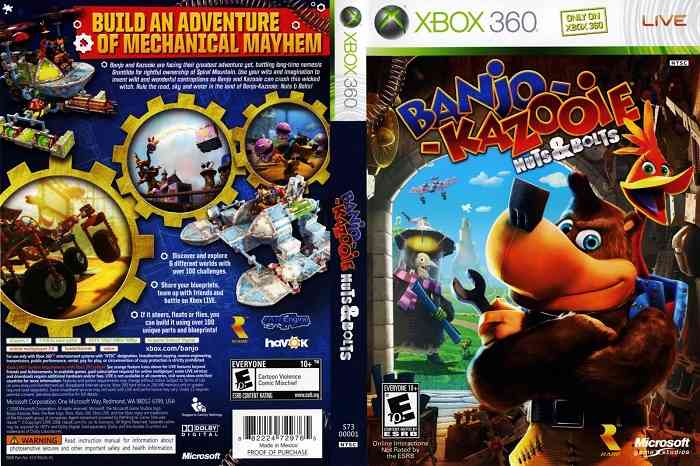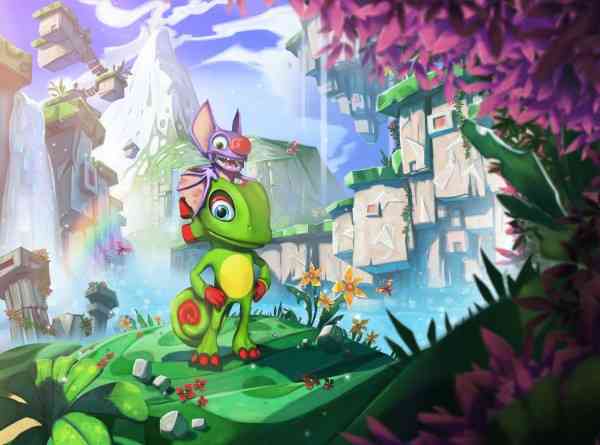Welcome to fourth and final part of The Retro Review Series’ fourth article, covering Banjo-Kazooie. If you’re just joining us now you won’t want to miss ‘The Intro‘, ‘The History‘ and ‘The Review‘ before taking this in.
The only complaint modern gamers could make about Banjo-Kazooie, is that its camera is terrible. It didn’t bother me at all when I was younger, but after playing lots of modern games, and going back to it, I realized that a lot of the game’s difficulty comes from the camera wildly swinging as the player is trying to jump from platform to platform. The open world, semi-non-linear item collection format of the 3D platformer is perfected by this game, and got out of control after it. Mario 64 is its only 3D platforming rival, and they both rank among the best games of all time.
Banjo-Kazooie was a massive success, and sold almost 2 million copies in North America. It has a 92 on Metacritic, and several Game Of The Year Awards (back when they were much less commonplace), including 2 awards from the Academy of Interactive Arts & Sciences: Console Action Game Of The Year, and Outstanding Achievement In Art/ Graphics. The game is frequently featured on Top 10 Nintendo 64 Games lists, and is currently the N64’s 16th best-selling title.
Banjo-Kazooie was so successful, that development was immediately started on a sequel, which was released two years later. Banjo-Tooie is a fantastic game, which matches the quality of the original, but was perhaps too big. And it lacks an element of magic that Banjo-Kazooie had. It’s still one of the best games on the system though; if Kazooie is a 10, then Tooie is a 9.
Two years after the release of Banjo-Tooie, Rare was bought by Microsoft, and it never rose to the high heights of its Nintendo era. Rare released some mediocre Xbox games, including a strangely tame remake of Conker’s Bad Fur Day called Conker: Live & Reloaded, Grabbed By The Ghoulies, Kameo: Elements Of Power, several Viva Piñata titles, , a prequel to Perfect Dark called Perfect Dark Zero, and several Xbox Kinect Sports games. It is a shame to not see some of these franchises on Nintendo consoles. Rare is currently developing a pirate MMO called Sea Of Thieves, which many are hoping will be the modern iteration of Project Dream.
But because Microsoft had no handhelds, and the PSP wasn’t released yet, the Banjo-Kazooie franchise saw releases on the Gameboy Advance, which were developed by Rare and published by THQ. The first of these games was Banjo-Kazooie: Grunty’s Revenge, which was good, but had a horrible sprite-heavy 2.5D perspective, not conducive to platformers. Then an ok racing title followed one year later called Banjo-Pilot. In 2008, the console follow-up to Banjo-Tooie was released, called Banjo-Kazooie: Nuts & Bolts. It was a vehicle-based game, which involved lots of building. Although it wasn’t the “Banjo-Kazooie 3” that everybody wanted, it was a very good game, and scored in the 8/10 range.
On May 1st 2015, a successful Kickstarter campaign was started for a spiritual successor to Banjo-Kazooie (as well as Donkey Kong 64) called Yooka-Laylee. Instead of having a bear and bird protagonist combo, players will be able to use a chameleon and bat. Almost all of the original N64 Banjo-Kazooie development team is working on the project, under the name Playtonic Games. Yooka-Laylee promises an N64 mode which will stylize the game to look like an N64-era Rare classic. Playtonic surpassed their Kickstarter goal in 38 minutes, and went on to raise 12 times their initial goal. Yooka-Laylee is currently scheduled for an October 2016 release on all home consoles.
So how can you play this 3D platforming classic? There were lots of copies made for the N64, so carts are not very expensive. Although N64 cart prices are on the rise, a copy of Banjo-Kazooie will only cost you around $40 (Tooie’s about the same). If you don’t own an N64, then your options are all Xbox. It was released on the Xbox Live Arcade for the 360 in 2008, along with Tooie. Some changes were made, such as remastered graphics, not having to collect all those music notes in one run (but then where’s the challenge!?), Stop ‘N’ Swop implementation, and widescreen support. And in 2015, a fantastic collection was released for the Xbox One called Rare Replay, to celebrate Rare’s 30th anniversary. It’s a collection of over 30 classic Rare games, including the three console Banjo-Kazooie, titles, as well as most the classics I’ve mentioned, with the notable exceptions of the Donkey Kong games and GoldenEye (dues to licensing reasons).
So should you play Banjo-Kazooie? Yes. Go get it.
Stayed tuned to COGconnected for more of The Retro Review Series in months to come. Every now and then I will divert from my intended plan with these articles, to review a classic I have recently finished. Next month will feature the first of these titles. It will also likely be the most recent game covered in The Retro Review Series for some time. Tune in next week to find out what it is! Please share your thoughts, and check out my reviews for PS4, Wii U, and 3DS, found right here, on COGconnected.

